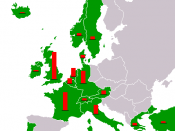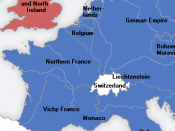After the World War II, which was the largest and the most significant armed conflict in the world history, Western European nations had experienced recovery, development and prosperity since the post-war years. As the main-battlefield of the WWII, the economic structure of Western Europe was destroyed seriously by German Nazi at that time. Governments were facing an arduous task of recovering and rebuilding domestic economy. As a result, science and technology were developing in fast pace during this period, that changed the international economy pattern greatly, which made an important impact on capitalist economy. During this stable economy environment, countries in the Western Europe came into a new era of the "Golden Years", with the world economy expending even overtaken the level of pre-war economy. It was described as the greatest and the most dramatic, rapid and universal social transformation in human history. (Eric Hobsawm, 1995) It was reported by the World Bank that the world GDP growth reached 5.1%,
which is an unprecedented period that the world had ever experienced. (O'Brien, 1986) However, the "Golden Years" came to an end in the mid-1970s. As this essay will briefly comparing and contrasting the impact difference in the economy during the Golden Years and the 1970s, and also discuss the diverse points of view toward the reasons why the economic growth of the post-war "Golden Years" had ended in the mid-1970s.
The first twenty five years following the end of the Second World War were halcyon days for Keynesian macroeconomics. Infrastructure recovery was fully developed during the post-war years. The postwar consensus can be characterized as the Keynesian economy, a mixed economy with the nationalization of major industries, the establishment of the National Health Service and the creation of the modern welfare in Britain (David, 1990). And what is...


